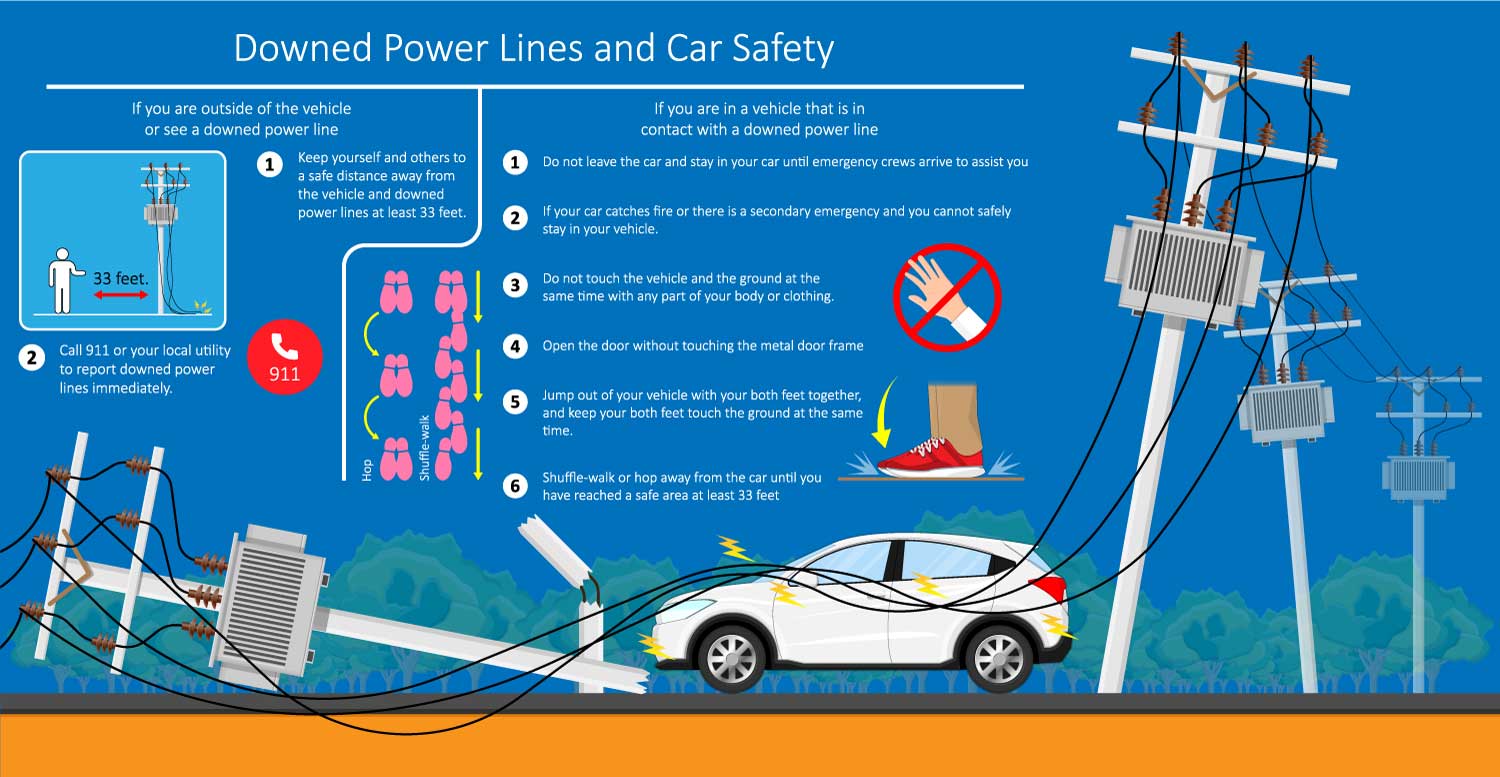In recent years throughout the Northwest, a number of wind storms following wet weather has resulted in disastrous emergency situations involving downed trees and power lines. When managing such a situation, utility and construction workers alike must be extra cautious and aware of the dangers present with fallen power lines. Electricity is widely recognized as a serious workplace hazard, exposing employees to electric shock, burns, fires, and even at times– explosions.
Particularly, power lines carry high-current electricity through suburban and rural areas which means more potential for high-risk injury. It has been found by the Electrical Safety Foundation (ESFI), that the construction industry had the highest rate of fatal electrical injuries in 2019, followed by utility workers. At some point, entering an area with fallen power lines is very likely and you must therefore, be vigilant of surroundings, keeping safety measures top priority.

The Hazards of Downed Lines
The way electricity travels through a variety of surfaces is what we refer to as ‘conduction’: the process by which heat or electricity is directly transmitted through a substance when there is a difference of temperature or of electrical potential between adjoining regions, without movement of the material. – Oxford Dictionary.
Certainly not limited to, but some conductive materials include:
- Water
- Metal
- Wood
- Rope
- Smoke
- Human body
Paper, glass, rubber, porcelain, ceramic and plastic are examples of non-conductive materials.
The potential for electricity to conduct through, thus electrifying surrounding objects in which crews may be working for repair increases the risk of minor, severe, and even deady electric shock. This is referred to as touch potential and step potential. Understanding these encounters with electricity will help you avoid some rather shocking situations.
Touch Potential
This refers to direct physical touch with material conducting electrical current. If you’ve ever come in contact with “hot-wire” or electric fencing, you experienced touch potential. The metal wire serves as the conductor for electricity, and thus creates a conductor out of the body touching it. With downed power lines, anything from fallen trees, branches, fencing of metal such as chain link or wood such as pasture fencing, or the power line itself can carry electrical current.
Step Potential
This refers to describing the electrical current between the feet of a person. Through conduction via conductive materials, electricity can work its way to the ground which can then be highly unpredictable due to the resistant nature of earth, thus charging random places. This creates extremely risky footing for up to 30 feet diameter around a fallen line.
Understanding the Hazards
Knowing the danger involved when working with downed lines is critical to your wellbeing and function of repairing damage. Due to the high voltage current surging through power lines, the extent of injury can be quite severe. Even still, there are some variables such as the strength of the current, the length of time someone is subjected, and the path it takes through the body. These particularly can be quite variable depending on the specific situation. Injuries can be mild with some tingling sensations or severe to the point of fatal injury such as unconsciousness or burns. Electric shock is used in the medical field to jumpstart a failed heart. It can also stop a heart and muscles from functioning. The heating effect of electrical current can also cause mild to severe burns, bleeding, breathing difficulty and ventricular fibrillation (rapid, erratic heartbeat).
What you should do
If you find yourself in such a touchy situation with downed power lines, take caution with these tips to help keep you safe and reduce risk of injury.
Take account of the situation and. Stop, look, listen. Inventory everything in the surrounding area before you approach. Identify downed lines. Look for fallen trees or branches, poles, fences, bodies of water (even damp ground of small puddles). Listen for sparks and hums of electricity. Assume any wires may be live. If you don’t see any such things or you aren’t sure of the next course of action, contact your emergency service.
Get to work and set up the area for repair. The guideline is to keep the public, equipment, and yourself away at least 30 feet proximity from the active energy source to create a buffer. The current gradient from wires lying on the ground is halved for every 2.5-3 feet removed from the source.
Do a good job and take your time. Take a moment to do a thorough job surveying the area and concentrate on what needs to be done. Adrenaline may be rushing and encouraging you to act quickly, but in order to keep everyone and yourself safe, take a moment to breathe, clear your head, and take to proper steps to remedy the situation. If you are in doubt, contact your emergency team and the local authorities to inform your actions. Depending on the situation, it may be inaction until others arrive.
If you’re involved with downed lines over your vehicle, here is a great video to inform you on how to best handle the situation.
Should Injury Occur
There may be an instance where a yourself or a co-worker may be exposed to electrical currents. If so, and you are able, turn off the source as soon as possible. If not, use any kind of non-conducting material to push it away or put it under your feet. Non-conductive materials include paper, glass, rubber, porcelain, ceramic and plastic are examples of non-conductive materials you could use.
With a severe injury, contact 911 and assess the injured person for CPR needs. Is there breathing? Signs of circulation? Active coughing or movement? If the answer is no, CPR is needed immediately. If burns are present, cover with sterile gauze or bandage if available or a clean cloth, but nothing like a towel or blanket of material with loose fibers as they can stick to the burn.